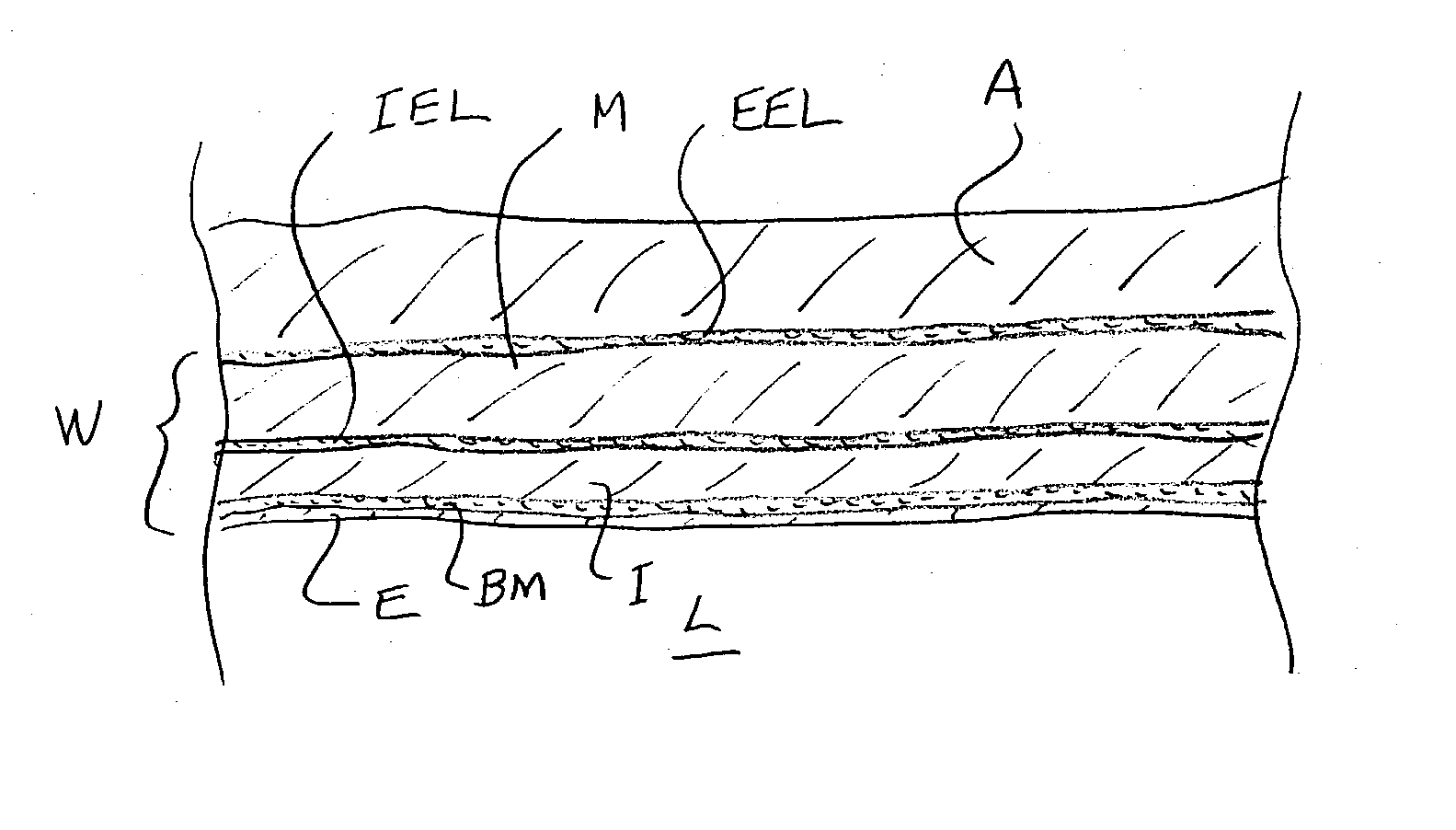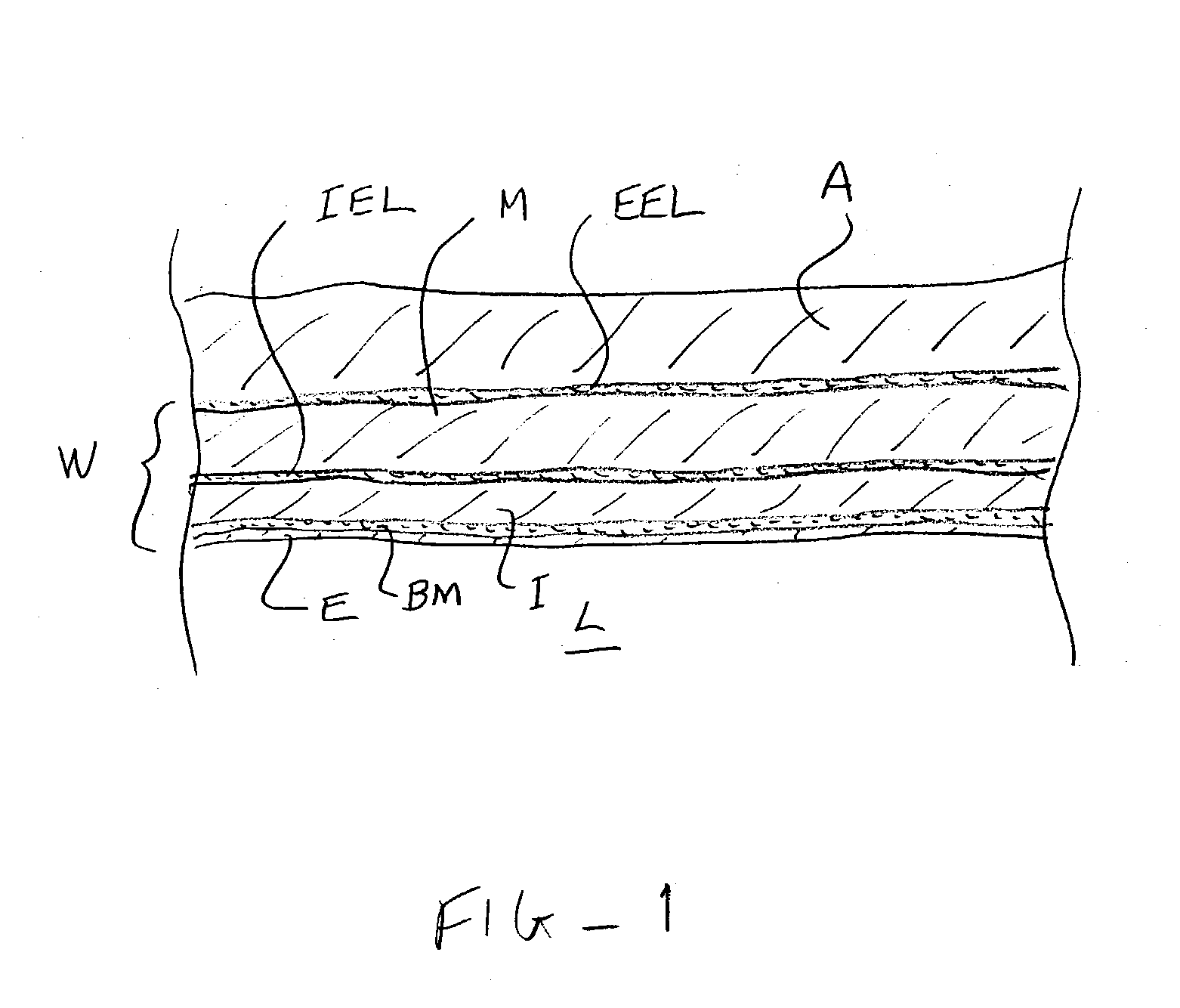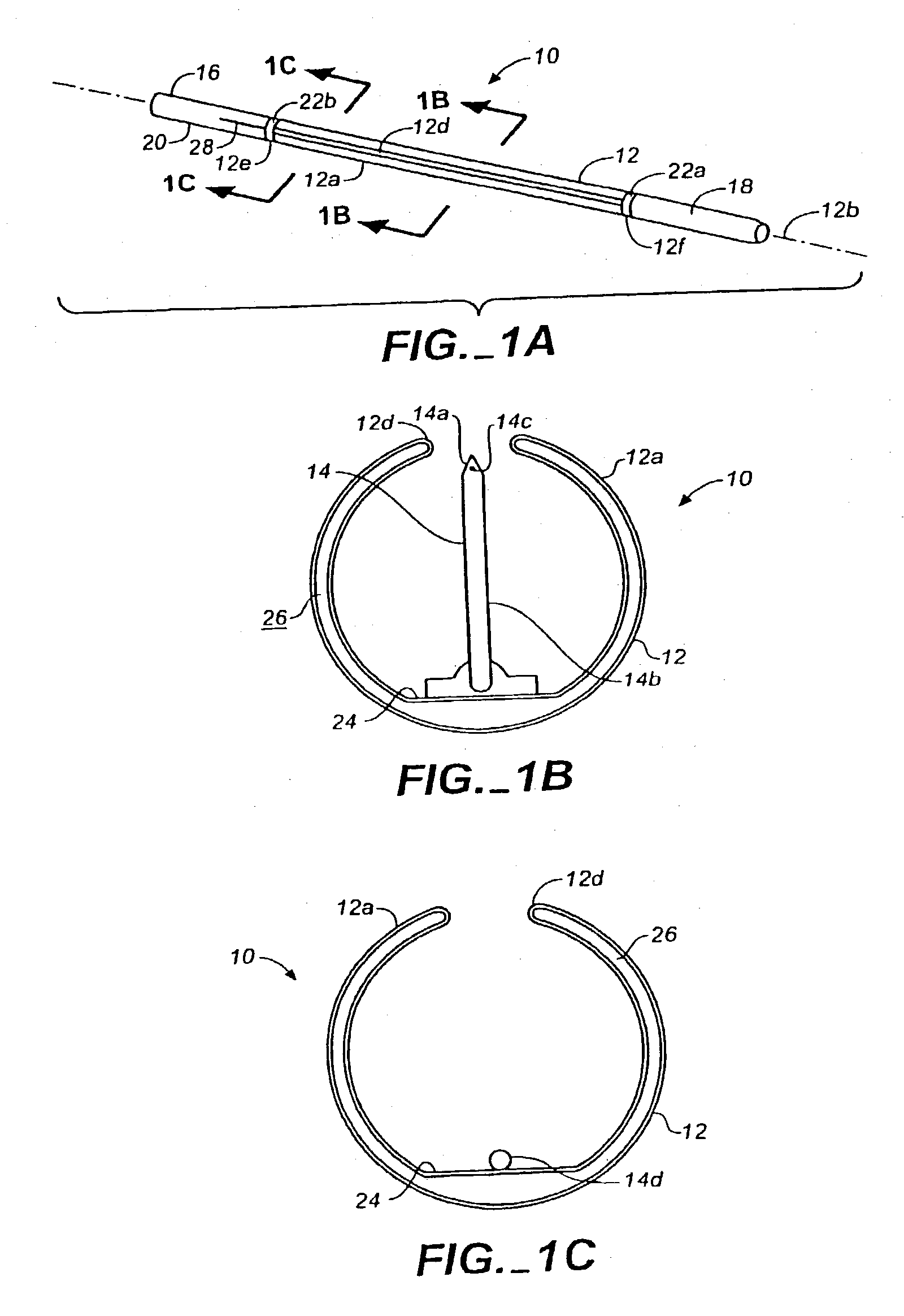[0015] This delivery protocol has been found to have a number of unexpected advantages. First, direct injection into the perivascular region has been found to immediately provide relatively high concentrations of the pharmaceutical agent in volume immediately surrounding the injected tissue. Second, following injection, it has been found that the injected agents will distribute circumferentially to substantially uniformly surround the blood vessel at the
injection site as well as longitudinally to reach positions which are 1 cm, 2 cm, 5 cm, or more away from the
injection site. In particular, the injected pharmaceutical agents have been found to distribute transmurally throughout the endothelial and intimal
layers of the blood vessel, as well as in the media, or
muscular layer, of the blood vessel wall. In the
coronary arteries, in addition to circumferential and longitudinal migration, the pharmaceutical agent can migrate through the myocardium to reach the
adventitia and wall structures surrounding blood vessels other than that through which the agent has been injected. Pathways for the distribution of the pharmaceutical agent are presently believed to exist through the
pericardial space and the sub-epicardial space and may also exist in the vasa vasorum and other capillary channels through the
muscle and connective tissues. Third, the delivered and distributed pharmaceutical agent(s) will persist for hours or days and will release back into the blood vessel wall over time. Thus, a prolonged
therapeutic effect based on the pharmaceutical agent may be achieved in both the adventitia and the blood vessel wall. Fourth, after the distribution has occurred, the concentration of the pharmaceutical agent throughout its distribution region will be highly uniform. While the concentration of the pharmaceutical agent at the
injection site will always remain the highest, concentrations at other locations in the
peripheral adventitia around the injection site will usually reach at least about 10% of the concentration at the injection site, often being at least about 25%, and sometimes being at least about 50%. Similarly, concentrations in the adventitia at locations longitudinally separated from the injection site by about 5 cm will usually reach at least 5% of the concentration at the injection site, often being at least 10%, and sometimes being at least 25%. Finally, the methods of the present invention will allow for the injection of pharmaceutical agents through non-diseased regions of the coronary and
peripheral vasculature to treat adjacent or remote diseased regions of the vasculature. The latter is of particular
advantage since the diseased regions may be
refractory to effective microneedle or other intravascular delivery protocols. Thus, pharmaceutical agent(s) can be delivered into the adventitia surrounding the diseased regions through remote injection sites.
[0016] The benefits of the present invention are achieved by delivering the pharmaceutical agents into a perivascular region surrounding a coronary
artery or other blood vessel. The perivascular region is defined as the region beyond external elastic lamina of an
artery or beyond the tunica media of a
vein. Usually, injection will be made directly into the vasa vasorum region of the adventitia, and it has been found that the pharmaceutical agent disperses through the adventitia circumferentially, longitudinally, and transmurally from injection site. Such distribution can provide for delivery of therapeutically effective concentrations of many drugs which would be difficult to administer in other ways.
[0018] The adventitial tissue has a
high concentration of lipids which will preferentially solubilize lipophilic pharmaceutical agents and hydrophilic or other pharmaceutical agents which are incorporated into lipophilic carriers, adjuvants, or the like. Both lipophilic and non-lipophilic pharmaceutical agents will have the ability to diffuse within and through the adventitia, with the rate and extent of such
diffusion being controlled, at least in part, by the degree and nature of the lipophilic moieties present in the pharmaceutical agents. Thus, when pharmaceutical agents are injected, either by themselves or in an aqueous carrier, the agents may tend to be preferentially absorbed by the lipids in the adventitia. Pharmaceutical agents do not, however, remain localized at the site of injection, but instead will migrate and spread through the adventitia to locations remote from the injection site. The affinity between the pharmaceutical agents and the lipids in the adventitia, however, will provide for a controlled and sustained release of the lipophilic and other pharmaceutical agents over time. Thus, delivery of pharmaceutical agents into the adventitia creates a biological
controlled release system for the agents. In particular, the pharmaceutical agents will slowly be released back from the adventitia into the
muscle and other
layers of the blood vessel wall to provide for prolonged
pharmacological treatment of those areas. Such prolonged treatments can be particularly useful for inhibiting vascular
hyperplasia and other conditions which are thought to initiate within the
smooth muscle cells and other components of the blood vessel wall.
 Login to View More
Login to View More  Login to View More
Login to View More 


